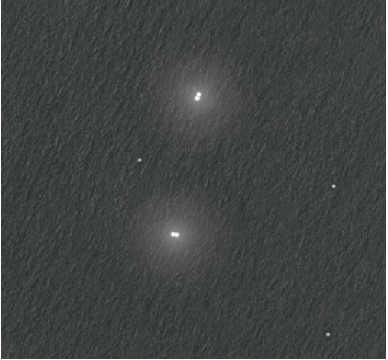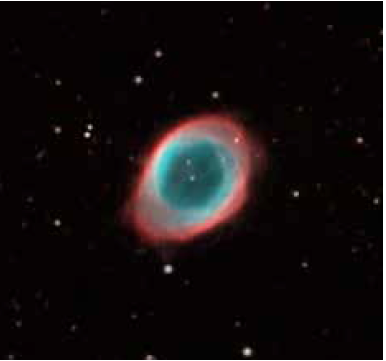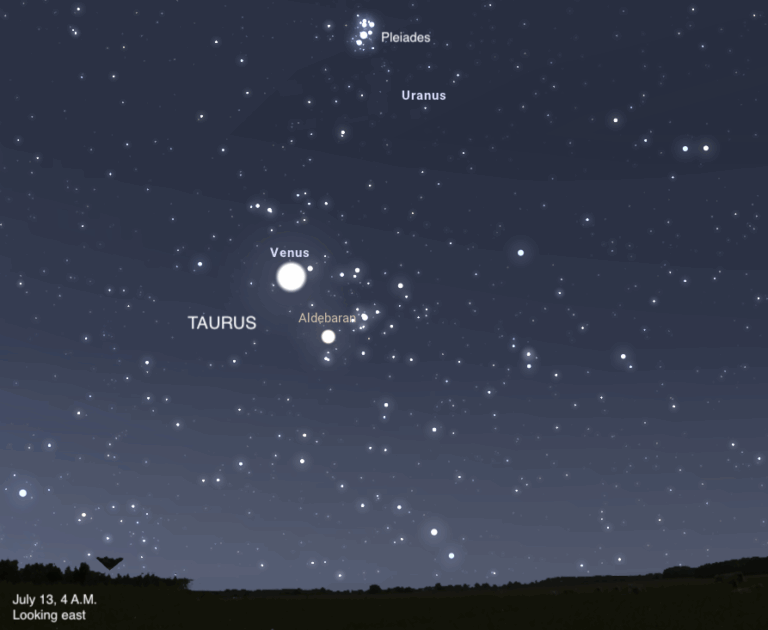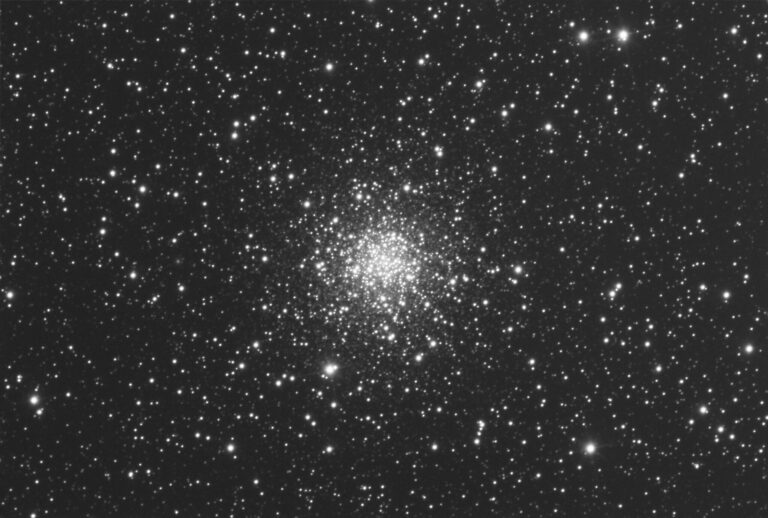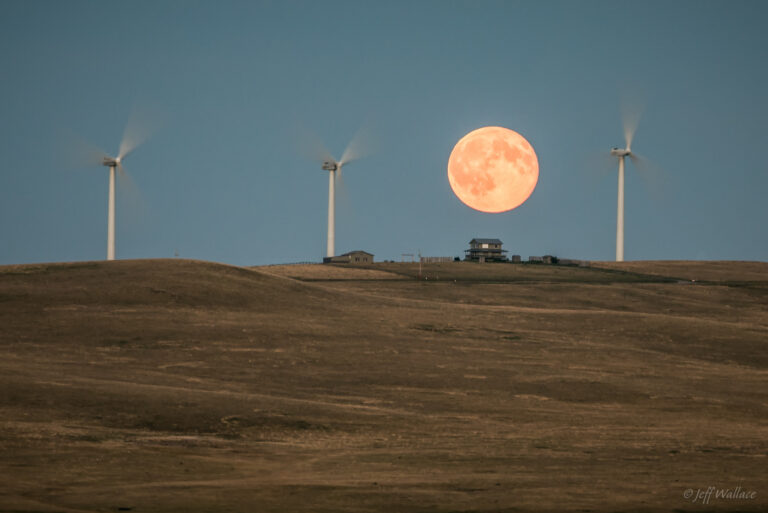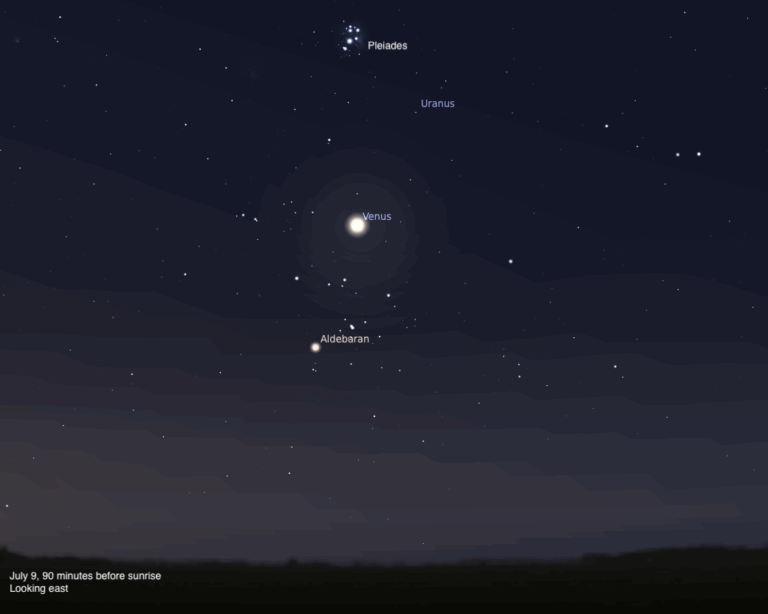Key Takeaways:
Three stars — Vega, Deneb,and Altair — dominate the late summer sky and serve to frame our binocular universe both this month and next.
We will begin this month by focusing in on the brilliant, blue-white stellar diamond Vega (Alpha [α] Lyrae). There is no missing Vega these evenings. It ranks as the fifthbrightest star in the sky and comes in at No. 2 in our survey of stars north of the celestial equator. Only Arcturus (Alpha Boötis) outshines it, barely.
Slightly defocusing your binoculars will enhance Vega’s bluish color. The telltale color comes from the star’s blistering surface temperature, nearly 17,000° F (9,427° C). That’s 7,000° F (3,871° C) hotter than the surface of our Sun. Vega is paying a price to achieve that temperature, however. Despite its being a little more than twice as massive as the Sun, Vega is consuming its fuel at a furious rate. It’s only about 500 million years old, or about onetenth the Sun’s age. But for Vega, that’s already middleaged. At this rate, it will run out of fuel in another half-billion years.
Epsilon1 and Epsilon2 are also called the Double-Double because each is actually a close-set pair of stars. Unfortunately, it will take at least 80x to see them because they are so closely spaced.
If seeing Epsilon left you wanting more, take a gander at Zeta (ζ) Lyrae. It is composed of 4th- and 6th-magnitude suns separated by about 44″. The fainter companion lies due south of the brighter star. I can just make out both through my 10×50 binoculars, while the added punch of my 16x70s clearly resolves them. Both impress me as shining pure white. How about you?
Aim along the southern side of the Lyra parallelogram. By placing Beta (β) and Gamma (γ) Lyrae on opposite edges of the field, our next target is almost perfectly centered. The Ring Nebula (M57) was discovered by Antoine Darquier in 1779 and is the sky’s most famous planetary nebula.
Spying the Ring through binoculars is daunting because of its tiny size. M57 shines at magnitude 8.8, but measures less than 4′ in diameter.
Our final stop this month is at the globular cluster M56. It lies about halfway between Gamma Lyrae and Albireo (Beta Cygni). Sure, M57 may garner more press, but M56 is easier to identify through binoculars. It will look like a distant ball of cotton nestled in a field strewn with stardust. It is easy to see how Charles Messier could have mistaken it for a dim comet when he discovered it in January 1779.
Do you have a favorite binocular target that you would like me to feature? Please send your suggestions to me at [email protected].
Until next month, always remember that two eyes are better than one.

